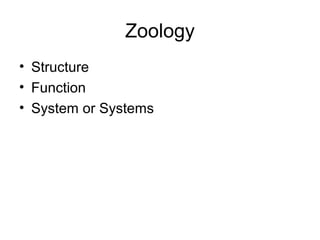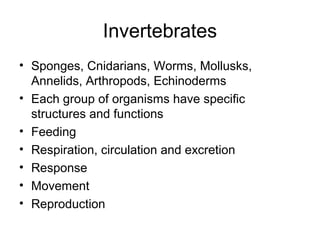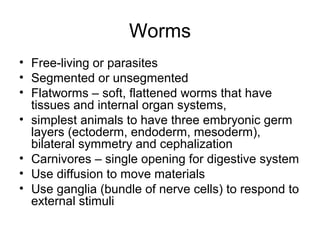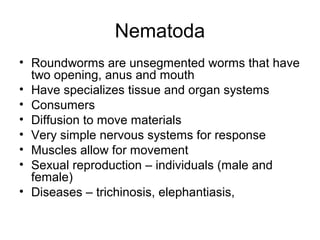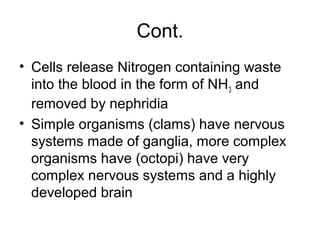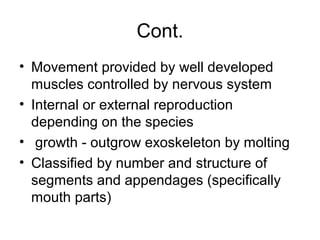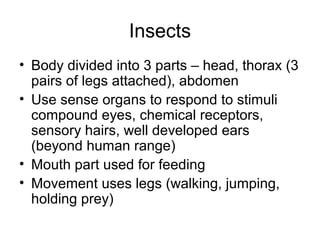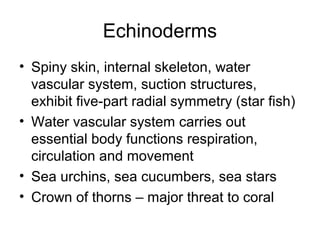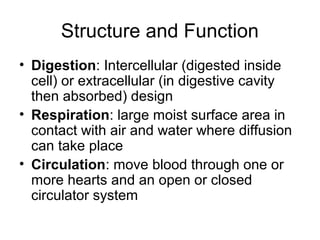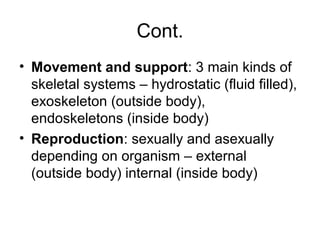This document summarizes key characteristics of invertebrate animals. It describes their structures and functions including systems for digestion, respiration, circulation, excretion, response, movement, and reproduction. Specific phyla are examined in more detail, including worms, mollusks, arthropods, and echinoderms. Evolutionary trends are discussed such as the development of specialized cells/tissues, body symmetry, cephalization, segmentation, and a coelom.
